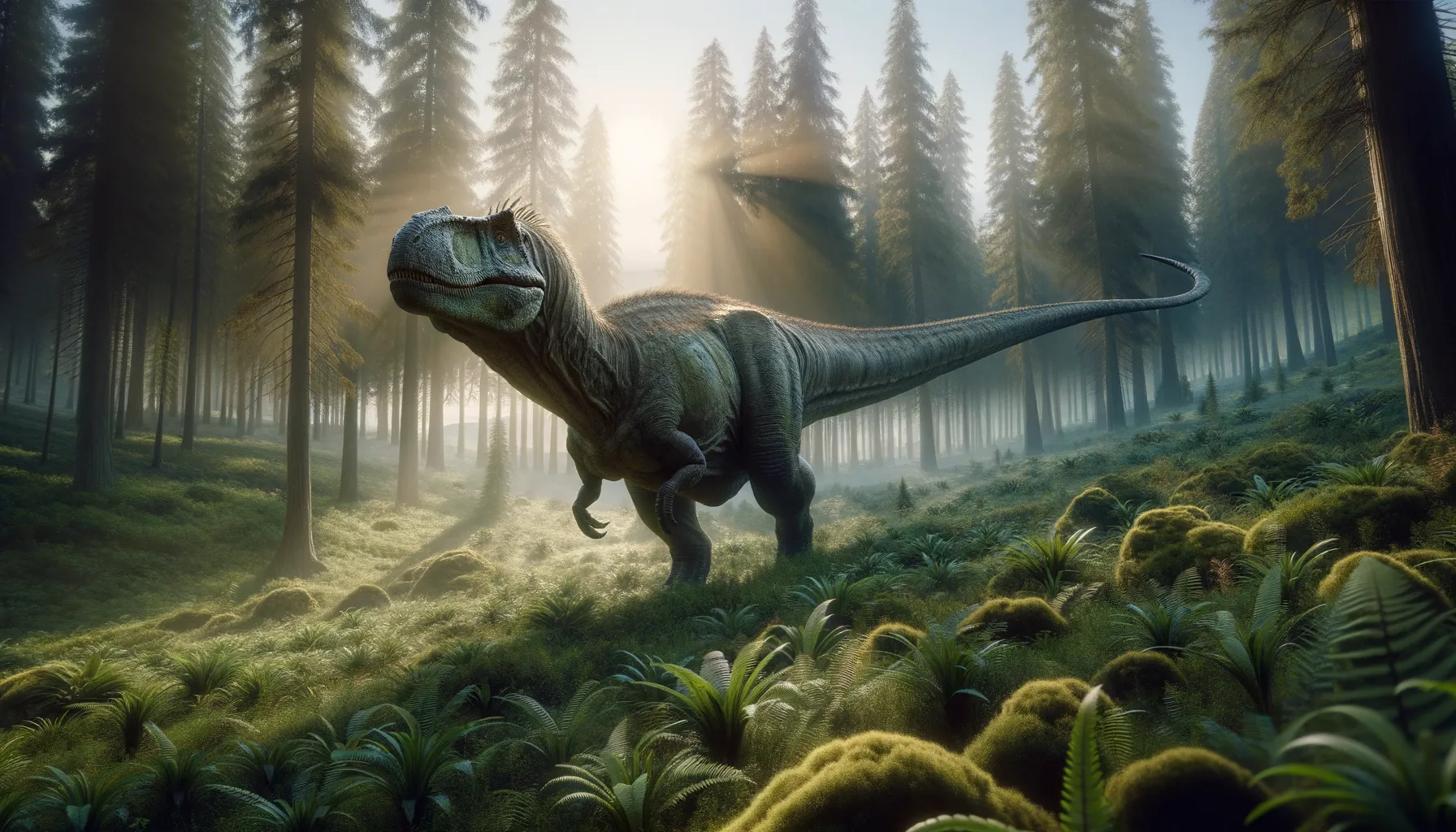
Tenontosaurus
The steadfast herbivore of the Cretaceous woodlands.
Period
Cretaceous
Length
Up to 26 feet long from snout to tail.
Height
Around 10 feet tall at the hips.
Weight
Approximately 1 to 2 tons.
Tenontosaurus was a medium-sized, plant-eating dinosaur that roamed North America during the Early Cretaceous period. Recognized for its long, powerful tail and sturdy body, it inhabited dense, forested environments. This dinosaur played a crucial role in the ecosystem, serving as both a browser of vegetation and prey for larger carnivores like Deinonychus.
Diet
Tenontosaurus was primarily herbivorous, feeding on a variety of plants. Its diet likely included ferns, cycads, and possibly conifers, which were abundant during its time.
Hunting
Being a herbivore, Tenontosaurus did not hunt for prey. Instead, it used its beak and strong jaw muscles to strip leaves and branches from plants.
Environmental challenges
Tenontosaurus faced environmental challenges such as predation from theropods like Deinonychus, which often hunted in packs. Seasonal changes would have affected food availability, necessitating adaptation to a fluctuating climate. The dinosaur also needed to navigate the dense woods and open plains of its habitat, requiring vigilance to avoid predators.
Speed
Moderate, capable of brisk walking.
Lifespan
Estimated at around 20 to 30 years.
First discovery
Discovered in 1903 by John Bell Hatcher.
Fun Facts
- Tenontosaurus lived about 115 to 108 million years ago during the Early Cretaceous period.
- It was a medium-sized herbivorous dinosaur, growing up to 8 meters (26 feet) long.
- The name 'Tenontosaurus' means 'sinew lizard', referring to the tendons found in its tail.
- Tenontosaurus fossils have been found primarily in North America, especially in places like Montana and Oklahoma.
- It is believed to have been prey for larger carnivorous dinosaurs like Deinonychus, often discovered near Tenontosaurus fossils.
- Tenontosaurus had a long tail which it likely used for balance and possibly for defense against predators.
- Unlike some other dinosaurs, Tenontosaurus walked on both two and four legs, showing unique locomotion flexibility.
Growth and Development
Juvenile Tenontosaurus grew rapidly once hatched, benefitting from a fast growth rate to avoid predation. This rapid development was supported by a rich diet and an abundant environment that provided necessary nutrients. As they matured, their physical characteristics and social structures became more robust.
Habitat
Tenontosaurus predominantly lived in floodplains, forests, and open areas of North America. These regions provided ample vegetation for feeding. The habitats allowed them to roam widely, making use of various terrains for feeding and breeding.
Interaction with other species
Tenontosaurus had significant interactions with predatory dinosaurs like the Deinonychus, which posed a constant threat. Fossil evidence suggests that Tenontosaurus was often preyed upon by these pack hunters. Additionally, it likely coexisted with other herbivorous dinosaurs, perhaps forming mixed-species herds for added protection.
Natural lifespan
Tenontosaurus could live up to 30 years in the wild.
Reproduction
Tenontosaurus likely reproduced by laying eggs in nests. Fossil evidence suggests communal nesting sites, indicating a possible caring strategy among groups. Hatchlings would have been relatively independent soon after birth.
Social behaviour
Tenontosaurus may have exhibited some level of social behavior, possibly moving in herds to protect against predators. Their social structures could have included loose aggregations for collective feeding and protection.
Fossil locations
Fossils of Tenontosaurus have been predominantly found in North America, especially the Cloverly Formation in Montana and Wyoming, and the Antlers Formation in Oklahoma. These regions have provided a rich trove of information about its environment and contemporaneous species.
